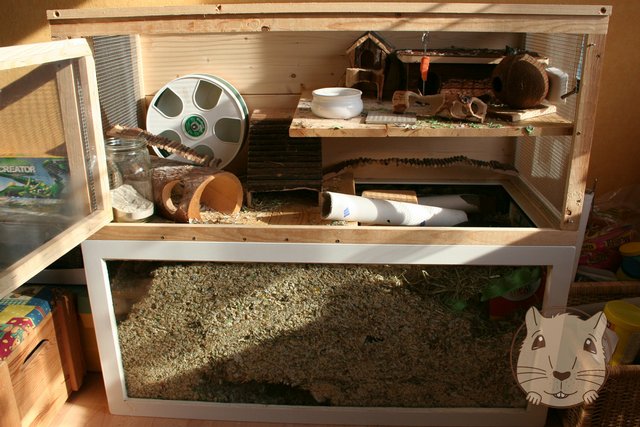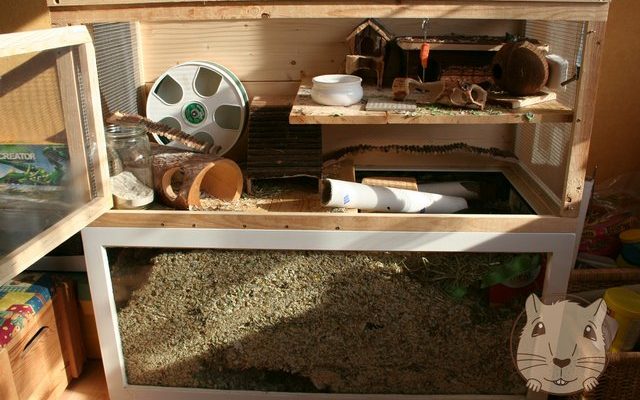
Honestly, picking the right cage and accessories can feel overwhelming, especially if you’re new to the world of gerbil care. But don’t worry! I’ll break it down step by step, so you know exactly what your little buddies need. We’ll talk about bedding materials that mimic their natural environment, wheels that provide much-needed exercise, and toys that stimulate their curious minds. Let’s jump in!
The Importance of a Well-Designed Cage
A well-designed cage isn’t just about aesthetics; it can impact your gerbils’ health and happiness. Think of their cage as their entire world. If it’s too small or lacks enrichment, your gerbils might become bored, stressed, or even unhealthy. A spacious, thoughtfully arranged cage allows them to explore, play, and stay active.
Moreover, a properly set up cage can make your life easier, too. When you provide a stimulating environment, you can reduce unwanted behaviors like chewing on the bars or excessive digging, which can be signs of boredom. Plus, a happy gerbil is often a more manageable pet. You might be wondering what elements to consider when designing their habitat. Let’s explore the basics!
Bedding: Choosing the Right Material
When it comes to bedding, the right material is crucial for your gerbils’ comfort and health. Here are a few popular options:
- Paper-based bedding: This is a favorite among many gerbil owners. It’s absorbent, safe, and dust-free, making it perfect for your little pals.
- Aspen shavings: These are biodegradable and offer good absorbency. However, avoid cedar or pine shavings, as they can be harmful to gerbils.
- Organic hay: Not only does it provide a cozy place for them to nest, but it also offers them something to chew on, which is great for their teeth.
Using the right bedding can help control odors and provide a comfortable surface for burrowing. Remember, gerbils are natural diggers! So, think about at least 3–4 inches of bedding to allow for those happy digging sessions.
Wheels: Keeping Your Gerbils Active
Gerbils are little bundles of energy, so having a wheel in their cage is essential. When it comes to wheels, size and material matter. Here’s what you should consider:
- Wheel size: Choose a wheel that’s at least 8 inches in diameter. A larger wheel prevents back issues and keeps your gerbils comfortable while they run.
- Material: Look for solid-sided wheels, as they’re safer than those with wire rungs. Wire wheels can injure tiny toes, so opt for designs made from sturdy plastic or wood instead.
- Noise level: Some wheels tend to be squeaky, which can be annoying at night. If you want a quiet option, look for reviews that mention silence or low noise.
Establishing a routine for exercise is key. Gerbils generally enjoy using their wheels in short bursts, so you might notice them hopping on and off throughout the day.
Toys: Stimulating Their Minds
Just like us, gerbils need mental stimulation to stay happy and healthy. Toys play a big role in that. Here are some toys that will keep your little buddies entertained:
- Chewing toys: Gerbils love to gnaw, so providing wooden chews or cardboard tubes can help satisfy their natural instinct.
- Tunnels: These can be store-bought or DIY. Tunnels encourage exploration and mimic their natural environment.
- Hideouts: Small houses or hidey-holes give them a place to retreat and feel secure, which is important for their well-being.
Rotate their toys regularly to keep things fresh and engaging. You’ll likely find that they enjoy discovering “new” toys just as much as the originals!
Setting Up the Cage: A Step-by-Step Process
Now that you know what to include, let’s talk about how to set it all up. Follow these steps for a successful gerbil cage setup:
1. Choose the Right Cage
Select a spacious cage with solid flooring. Glass aquariums or wire cages with deep bases work well. Aim for a minimum of 24 inches long.
2. Add Bedding
Pour in your chosen bedding, aiming for about 3–4 inches. You want enough for them to dig and create tunnels.
3. Install the Wheel
Attach the wheel securely to the side of the cage, ensuring it’s at a height where your gerbils can easily access it.
4. Arrange Toys and Hideouts
Put in tunnels, chew toys, and hideouts in different corners. This encourages exploration and keeps them stimulated.
5. Add Food and Water
Place food and water bottles in accessible areas. Make sure the water bottle nozzle is at the right height for them to reach comfortably.
Maintaining a Clean and Safe Environment
Your gerbils’ cage is their sanctuary, but it also requires regular upkeep. A clean environment helps prevent odors and keeps your pets healthy. Here’s how to maintain it:
- Spot clean daily: Remove soiled bedding and uneaten food each day. This makes the big clean-ups much easier.
- Change bedding weekly: Swap out the old bedding for fresh material. It’s a good opportunity to check for any signs of health issues.
- Deep clean monthly: Thoroughly wash the cage with mild soap and water, making sure to rinse well. Never use harsh chemicals, as they can harm your pets.
Keeping a clean space not only benefits your gerbils, but it also makes for a more pleasant environment for you.
Common Mistakes to Avoid
Setting up a cage for gerbils sounds straightforward, but it’s easy to make a few common mistakes. Here are some pitfalls to steer clear of:
- Too small of a cage: A cramped space can lead to stress and health problems. Always aim for a larger setup.
- Using harmful bedding: Avoid cedar or pine shavings; they can be toxic. Stick to safe options like paper-based bedding or aspen shavings.
- Neglecting exercise: If your gerbils don’t have enough opportunities to run and play, they can get bored and unhealthy. Make sure to provide a wheel and plenty of toys.
Being aware of these common mistakes can help you create a much healthier and happier home for your little creatures.
In conclusion, creating the best cage setup for your gerbils involves more than just throwing a few items together. It’s about considering their natural behaviors and ensuring their environment is safe, stimulating, and clean. With the right bedding, a good wheel, and engaging toys, you’ll be providing a space where they can flourish. Happy gerbil-keeping!

